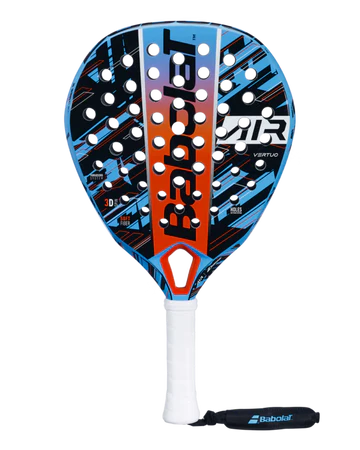Padel is fast growing in popularity all over the world. Padel is attracting many new players who yearn to excel in the sport. The selection of the right padel racket, whether you are a new or an experienced player, plays an important role in the sport. Though there are many options available, there are some prevalent myths that may confuse you when you look for a racket. In this article, we clarify some of those misconceptions and shed light on padel racket facts that will help you perform at your best.
Below are some of the myths about padel rackets demystified:
The Racket Material Has No Effect on Efficiency
There is a widespread misperception that a padel racket’s material has little bearing on its performance. Some players think a fiberglass or carbon fiber padel racket will function equally. In fact, players who want better control and quick response will find carbon fiber rackets excellent because they are lighter and feel stiffer. While on the other hand, players seeking a more forgiving racket will find that fiberglass rackets typically offer greater flexibility and a softer feel.
Greater Control Is Gained from a Harder Racket Surface
Although it might make sense that a firmer surface would provide more accuracy, this is not always the case. Control of the racket in padel is determined by several variables, such as the racket’s balance, the player’s skill level, and the kind of shots being played. A softer padel racket surface may occasionally absorb more impact and facilitate greater ball handling, which improves control. Consequently, it is imperative to experiment with several rackets to see which feels best for your style of play.

The Best Option Is the Most Expensive Racket
It is simple to make the mistake of supposing that the priciest padel racket on the market is always the best choice. Although the cost might be a good sign of quality, it is not always the case that the priciest racket will be the best fit for your needs or preferred playing style. The ideal padel racket fits your comfort preferences, playing frequency, and ability level. A racket appropriate for your skill level might offer more value and better performance. You can check out Padel USA for quality rackets and other equipment.
Heavier Rackets Are Better for Power
It is true that weight does affect power, but it is not the only factor to consider. While heavier rackets might give your swings more momentum, they also require more strength and can tire you out more, especially in extended games. The player’s technique, swing speed, and racket balance all contribute to power. With the proper technique, a lightweight, well-balanced padel racket may still produce a lot of power and frequently improve response time and maneuverability.
Once You Become Used to Them, All Rackets Feel the Same.
This is untrue because every racket has unique qualities that can impact how well you play. You risk getting injured or performing worse on the court by getting accustomed to a padel racket that is not comfortable for you, either physically or in terms of style. You’ll need to take some time to try many different padel rackets and notice how they feel in your hand, through your swings, and ultimately how they affect your total game.
Conclusion
It is important to choose the right padel racket to improve your play and experience maximum fun. Debunking these various misconceptions will set you well on the road to a choice that best suits your requirements and playing style. Your ideal padel racket feels nice in your hands, therefore helping your on-court performance, but not necessarily the most expensive, heaviest, or hardest.




